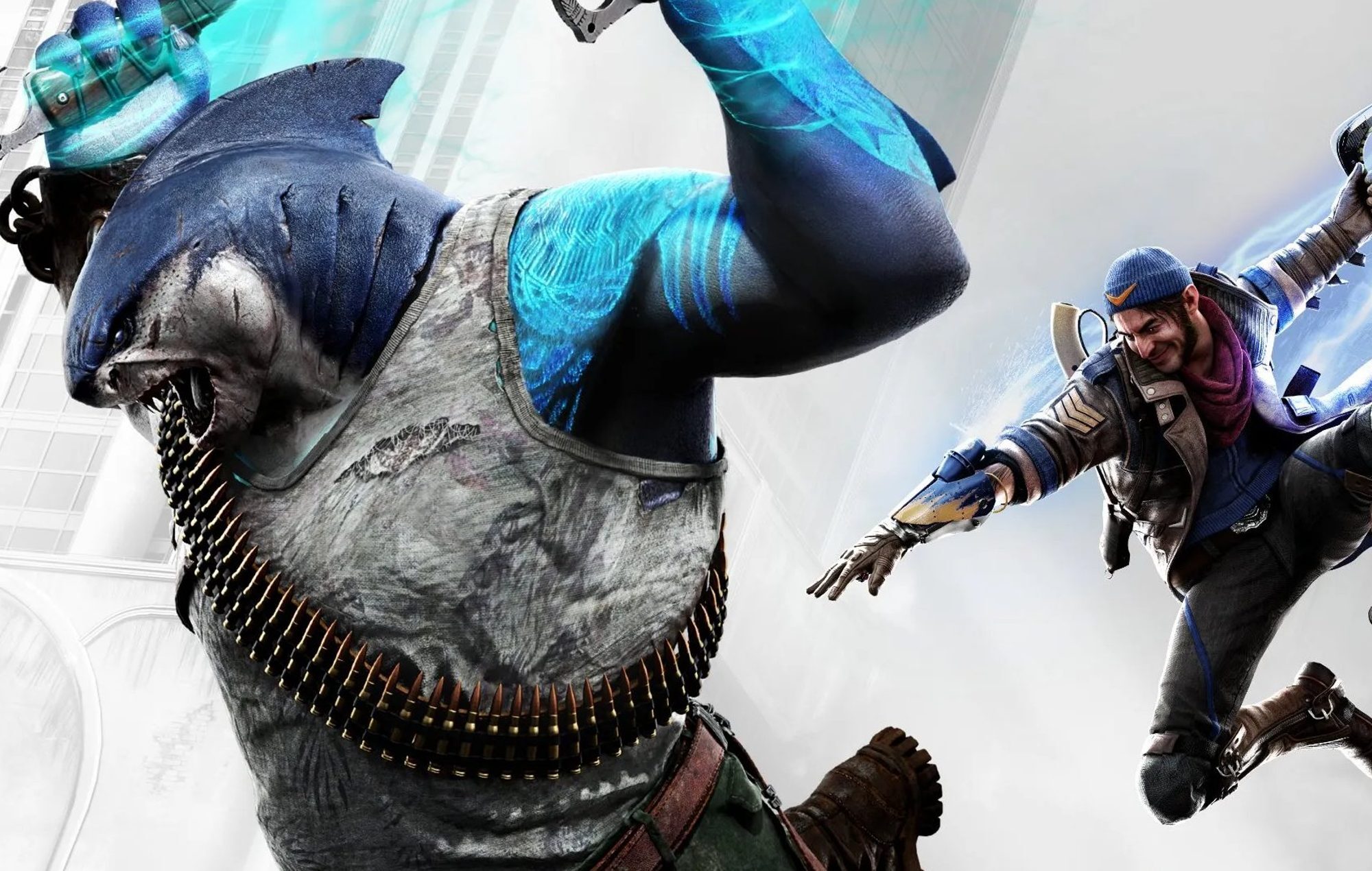After a long road to release, Suicide Squad: Kill The Justice League is finally here. Set in the city of Metropolis, anti-heroes Captain Boomerang, Harley Quinn, King Shark, and Deadshot – collectively known as Task Force X – have been called in to take down the Justice League. Superman and his do-gooder allies have been corrupted by the villainous Brainiac, which means it’s up to our hapless batch of baddies to save the day.
READ MORE: Is ‘Suicide Squad: Kill The Justice League’ coming to Game Pass?
Made by Rocksteady, the same studio behind the excellent Batman Arkham games, Suicide Squad places you right in the center of the DC Universe. The team is no stranger to crafting excellent campaigns with memorable characters, and right from the get-go, the same is true here.
The Flash is darting around everywhere. Green Lantern can show up at any moment. Batman is stalking you from the moment you set foot in Metropolis. There is a sense of being on a big DC-themed rollercoaster in this 10-hour campaign, which meshes well with the fantastic performances from the Justice League as they spout devilishly evil monologues. Each member of the Suicide Squad also has some great one-liners and moments as they come to terms with the fact they are being asked to kill the Justice League, despite the anti-heroes being way out of their… well, league.
Suicide Squad: Kill The Justice League. Credit: Rocksteady Studios.
Though you are severely outmatched going up against these fabled DC heroes, witty writing, well-timed jokes, and comedic camera work make their underdog story incredibly entertaining from beginning to end. While everyone here delivers fantastic performances from the stern and takes-no-shit manager Waller to the slightly unhinged teenage iteration of Poison Ivy, characters outside of the Justice League feel like window dressing within this world – vendors to craft you guns, rather than people with compelling backstories. Suicide Squad has some great large-scale world-building but it’s sorely missing those more intricate moments with its heroes and villains that Rocksteady is known for.
One area where the game does allow you to get up and close in is combat, as, in tandem with solid gunplay, you’re encouraged to pummel enemies with abilities and melee attacks. Combat is fast-paced, and most importantly, feels fantastic. Jumping from building to building, slamming into enemies, and watching as explosions light up the screen is gratifying, and chaining all of this together is incredibly fluid.
Boss fights within the campaign are some of the best parts of the game, as they revolve around large setpieces and more prolonged fights. But, while combat itself is great, you are given a lot of weapons, combat abilities, and grenades that feel bland and uninspired. Beyond a brief colour change or slightly different camo, weapons within every category all look the same. Once you have seen one assault rifle or pistol, you have largely seen them all, even if they are of a different rarity, element, and archetype.
Suicide Squad: Kill The Justice League. Credit: Rocksteady Studios.
Collecting gear isn’t something we have found worthwhile yet. We completed the campaign without worrying about builds, synergizing perks, or modifying weapons through allies at the Hall of Justice. Don’t expect to think too hard or strategise when it comes to kitting out tanky bruiser King Shark. There isn’t any progression or gear score tied to the armour and weapons you find either, so it feels like scooping up a bunch of guns only to dismantle them when something new comes along.
On the surface, this is fine, but for a live service game (think Destiny) that is supposed to offer a lot of customisation, it’s underwhelming. Additionally, the lack of weapon variety causes worry that the endgame might fizzle out after a few hours.
Beyond the campaign and endgame, there isn’t much else going on with Suicide Squad’s open-world. Some repetitive side missions boil down to “defend this area”, “kill these enemies”, or “save these civilians” along with a bunch of Riddler collectibles to hunt down. But the game is painfully lacking in terms of quests and side activities.
We’re keen to see what the endgame is all about, as that seems to be the main bulk of what there is to do post-campaign. But right now it feels like several games have just been smashed together. A fantastic campaign is hindered by repetitive missions that feel like they have stumbled out of 2010, uninspired upgrades, and an open world that feels bare despite it being fun to fight in. It all feels rather incongruent and right now Suicide Squad: Kill The Justice League’s directionless structure feels too close to Task Force X’s own dynamic – entertaining yet jumbled.
Suicide Squad: Kill The Justice League launches on February 2 and is available on PS5, Xbox Series X|S, and PC. We’re reviewing on PS5, and will be publishing our scored review after more time playing the post-campaign.
The post ‘Suicide Squad: Kill The Justice League’ review-in-progress: heroic yet muddled appeared first on NME.




